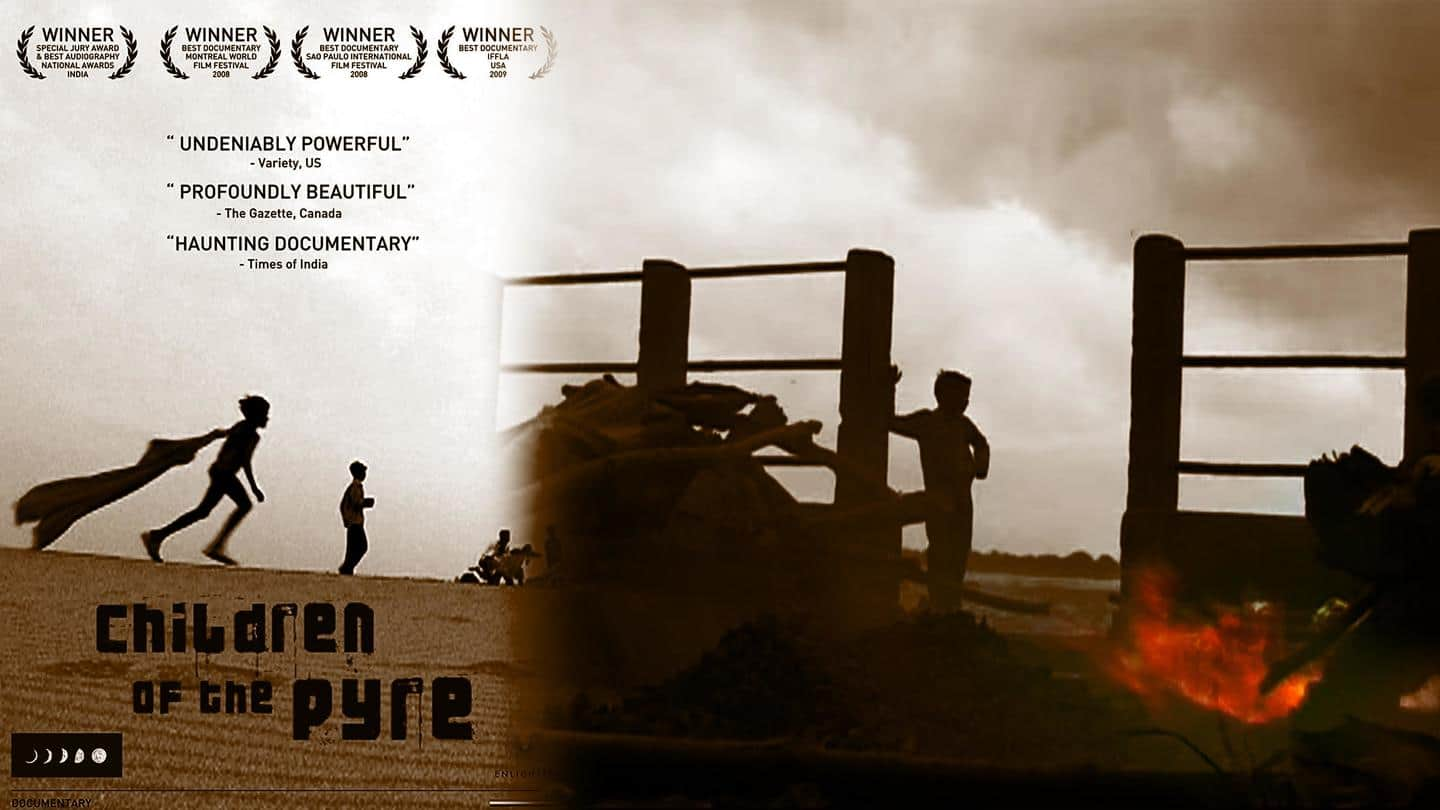
#NewsBytesRecommends: 'Children of the Pyre'—a disconcerting, haunting, yet important watch
What's the story
Rajesh S Jala's National Award-winning documentary Children of the Pyre (2008) is all things disconcerting, unnerving, and haunting.
It takes you to a part of India you either didn't know existed or considered too trivial to pay attention to.
A perfect example of a cinematic piece that stays with you after credits roll, it may be an uncomfortable watch but is an important one.
Background
Testifies how truth is stranger, sometimes darker than fiction
The documentary narrates the tale of seven boys, mostly prepubescent, who carve a life out of death at Varanasi's Manikarnika Ghat.
Considered a supposed "gateway to heaven," Hindus believe that burning the deceased here paves the way for moksha or eternal salvation.
The irony cuts through you: there is supposed life after death for some, while no mirth or merriment for select others.
Troubling state of affairs
Devoid of agency, the boys slog for hours preparing pyres
The boys slog through a perturbing job; they toil for hours on end and prepare numerous pyres.
A despicable job that renders them "untouchable," it entraps them in a vicious cycle with a depressing dead-end.
There's little to no choice or agency, and at a time when they should be in school, the kids are slapped with the haunting realization of existential angst daily.
Ramifications
The job catalyzes their lack of innocence, sometimes, even humanity
The documentary also explores how the job strips the kids of innocence and, sometimes, humanity.
Seeing one body burn is spine-chilling enough, but one of the boys, Ravi, brags about having burnt "a thousand bodies" in his decade-long career."
Of course, he doesn't fathom the gravitas of the situation and wears it like a badge of honor, but his statement makes our stomach turn.
Lack of home
The boys practically live at Ghat, not at home
For several kids, the Ghat becomes home—they spend more time with dead bodies than do with their family members.
It is a terrifying reality, one that is tough to shake off one's mind.
The logs of wood, the fiery red fires, the piles of corpses, and the wailing of grieving families fill their life.
In the end, a place of death keeps them alive.
Contrast
Thankfully, not everything is dark and despondent
The second half of the documentary, relatively lighter in approach, finally provides the film a chance to breathe.
As the holy city springs to life in sequences dominated by dance, vivacity, and music, a feeling of relief finally washes over us as we realize that there's more to the boys' life than their soul-crushing, Kafkaesque nightmare.
A much-needed contrast to the film's first half.
Conclusion
The documentary leaves you with a sense of optimism
This optimism carries on in the final act, too, when the boys express their wish to explore a life that doesn't involve looking at pyres.
When they talk about their desire to break free from the shackles of drunkard, almost-nonexistent fathers, we realize that perhaps all is not lost, and their hearts still harbor a flame of hope, not ready to die anytime soon.